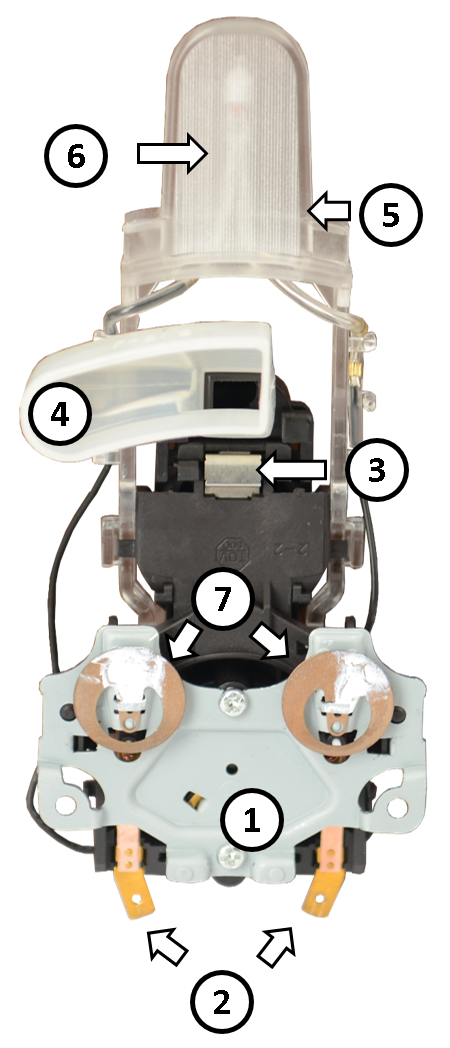Despite what the US Embassy in London may say, microwaving is not the right way to heat water for tea. For one thing, an explosion of superheated water as you take your mug from the microwave creates the very opposite of the soothing and restorative effect a good cuppa should have. The proper way to make tea is with water boiled in a kettle, and these days that’s usually a super-convenient electric kettle.
Except.
As Consumer NZ wrote in 2019, “We’d expect even the cheapest kettle to last at least five years of household use” – but their survey showed that 85% of kettles are defunct before they reach that age.

This does not surprise me in the least. Over the course of our marriage, the Caped Gooseberry and I have seen no fewer than five electric kettles bite the dust – including the one that memorably died the day after we moved house.
Four of the five were bought new; the fifth was still technically functioning but tended to scatter the cuppa with microplastics as it slowly crumbled. (Fun fact: microplastics are up to 5mm in size, and some therefore can be seen with the naked – if somewhat disbelieving – eye.)
When the most recent kettle sprung a terminal leak, we decided enough was enough. Our kettles have had an average life span of two and a half years, and given how organized we are at taking things to the e-waste depot, there was every chance we’d have another dead kettle on our hands before its predecessor had made the trip. I’ve got socks that have lasted better, for pity’s sake. Socks!
This time, we decided we’d try something different. A stovetop kettle. Admittedly, it is possible that a stovetop kettle might also fall apart with time, but there are fewer parts to go wrong. But, having been filling in the kettle-less time with boiling a pot on the stove to make cuppas, we were determined to have a kettle with a whistle. The watched pot never boils, but it never boils over or burns out, either.
The whistling kettle was invented in 1923, and one would have imagined that after a full century, the teething issues would have been ironed out and it could qualify as an Old Technology to be Praised. On the other hand, electric kettles have been around since at least 1883, and apparently 140 years have still not done the trick. However, despite the seniority and predominance of electric kettles, there is still a reasonable range of stovetop kettles available.
A range, anyway. There are the sturdy camping kettles which have a spout for water to go in and out, but no means of cleaning inside (or even seeing if they need cleaning). There are – believe it or not – collapsible kettles. There are Le Creuset kettles, with a five year warranty rather than the usual Le Creuset lifetime warranty. There are fancy stylish kettles which do have a lifetime warranty, but “lifetime” apparently means the lifetime of the kettle, which seems a bit dodgy.
There are also simple basic kettles of the bog standard variety, fairly cheap. We decided to start with one of these, reasoning that while it might not last forever, it would give us some indication of the stovetop kettle function range without shelling out hundreds for a warranty of dubious quality. In due course it arrived, and we realized that we had seriously underestimated just how poor quality a new and simple item could be.
It arrived in a box with incorrect details. The thin metal attaching the handle to the body was already mashed in transport and pulling away from the body. There was a dent, a place where the protective coating had come away (we found the strip later inside the kettle), and more scratches and chips than you could shake a stick at. We didn’t even bother trying to boil water in it. After all, if you want a sudden explosion of boiling water, why not use the microwave?
Happily, the vendor gave us our money back (it is possible this is not the first time they have had to do such a thing) and we are left with two questions: what kettle to try next (something a bit more solid, certainly) and what to do with the flimsy one that the vendor mysteriously does not want back.
One could punch holes in the bottom and hang it up for a planter, if one had a suitable hook to hang it off (we don’t). One could use it as a handbag-like objet for carrying one’s craft materials about, were it not for the narrowness of the lid opening. One could use it as a watering can, if one was short of watering cans (we aren’t).
Any other ideas as to what we could do with this kettle-like receptacle? And do you have any recommendations on sturdy and durable kettles, preferably of the whistling variety?


How about a design feature in the garden, emergency water supply for birds, bell for attracting attention?
My experience of kettles on the stove top centre around handles giving way suddenly and very early on in the expected lifetime of the kettle (catapulting a kettle-full of boiling water over the kitchen and bystanders) due to its inability to cope with the heat coming up the side of the kettle. We opted for metal handle with hot mitt.
Bird water supply! What a nifty idea! Harder for them to fling bits of rubbish into as well.
We will certainly keep an eye out for sturdy metal handles on the next kettle (with or without silicone coatings).